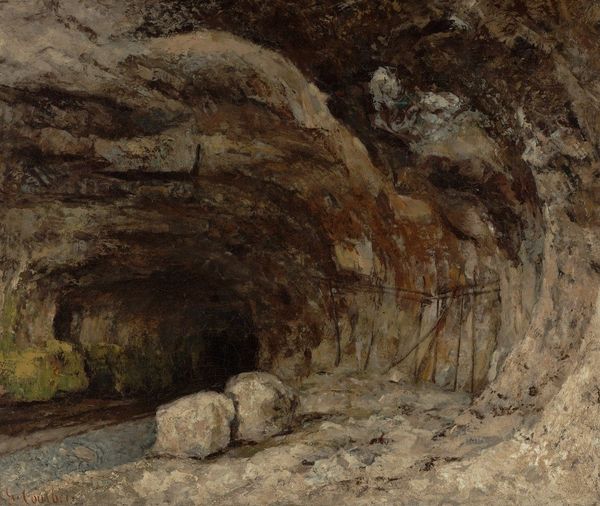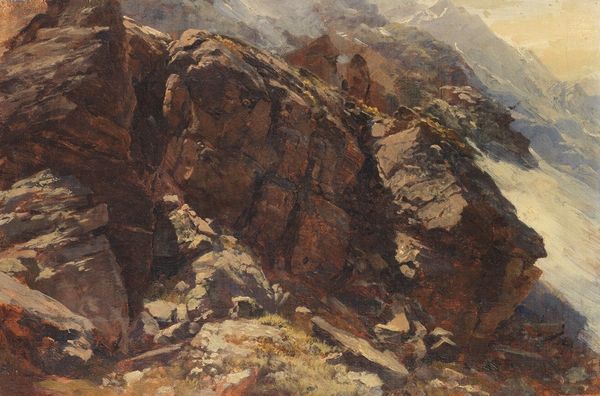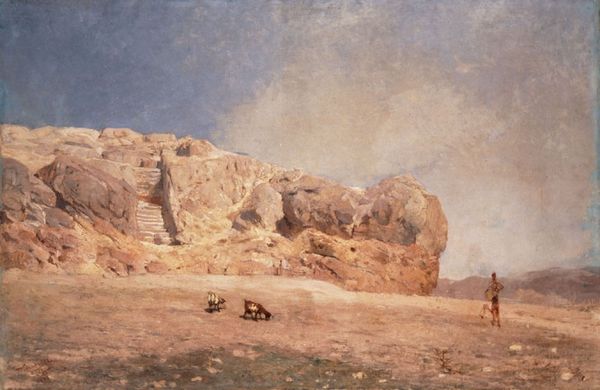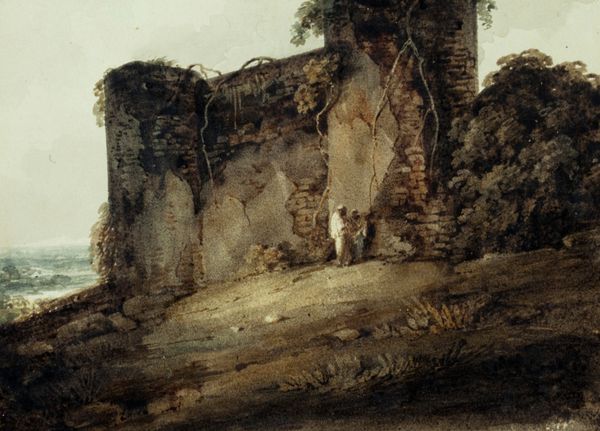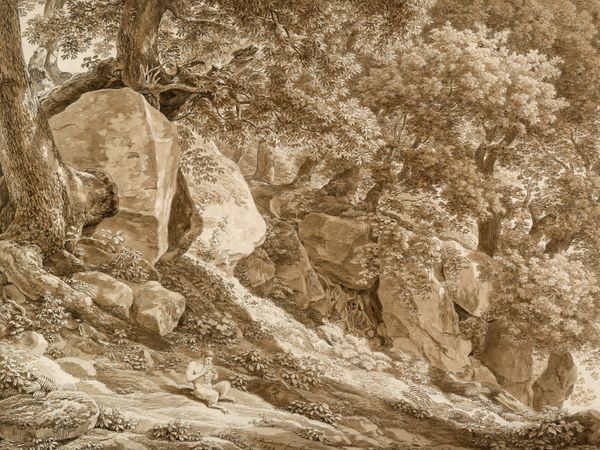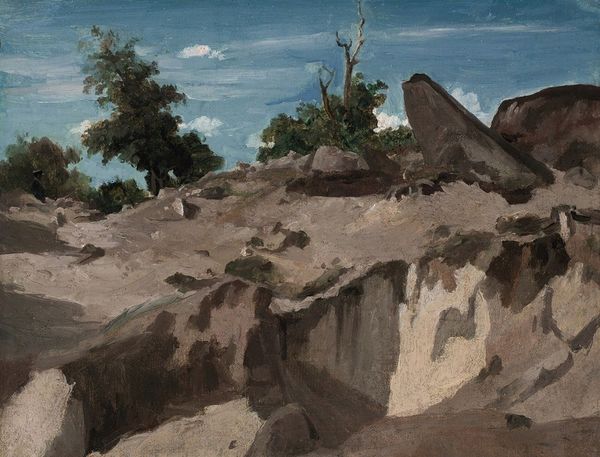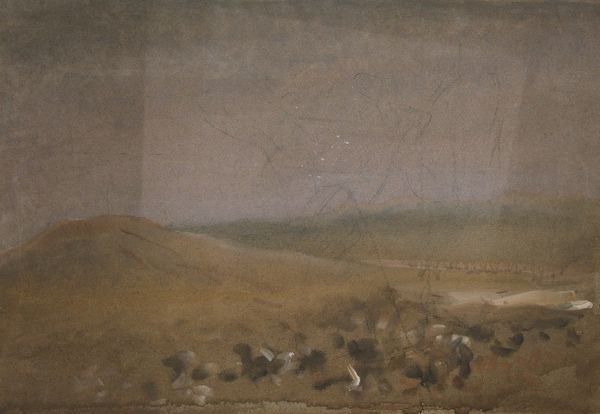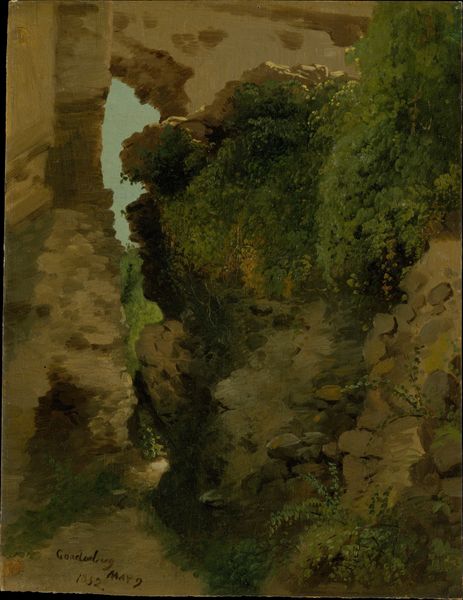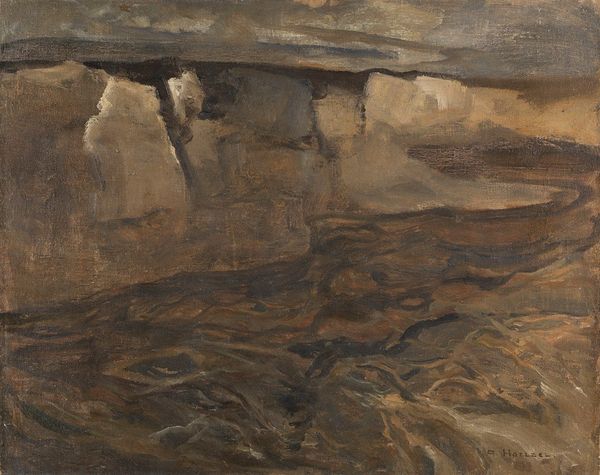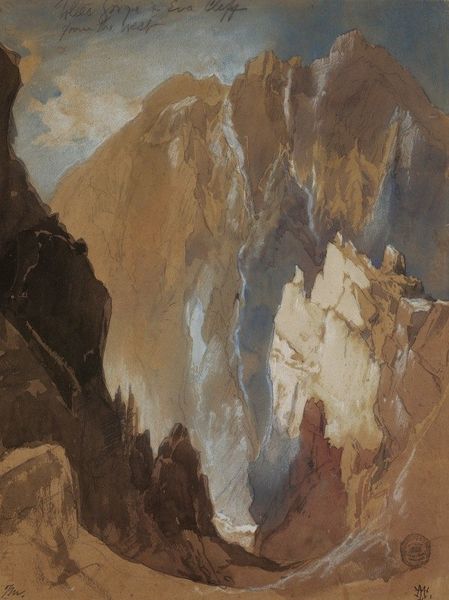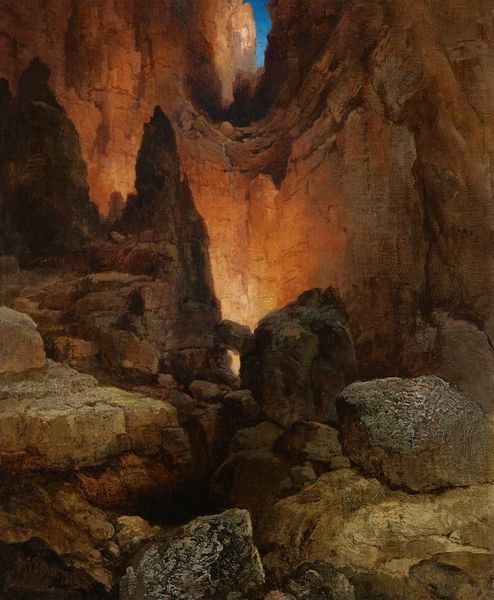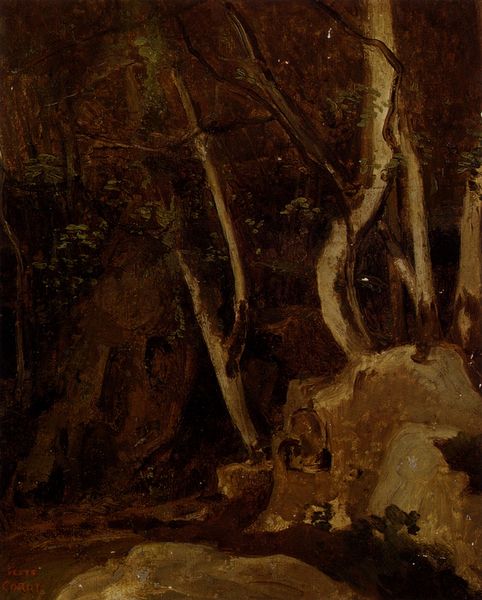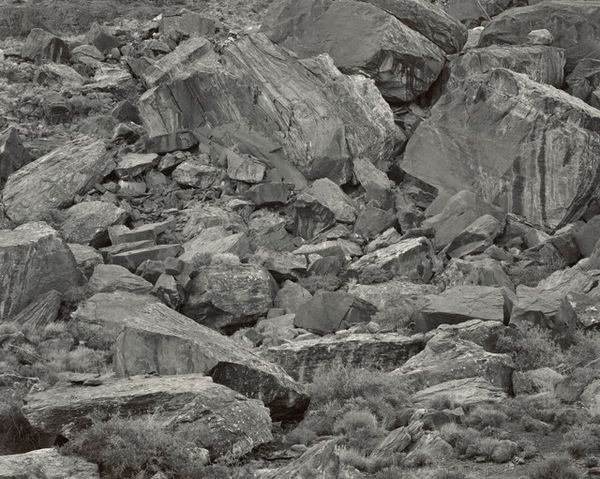
Copyright: Public Domain: Artvee
Curator: The artwork we are looking at today is titled "Study of Rocks." It's an oil painting by Ľudovít Čordák and dates to somewhere between 1900 and 1930. Editor: Immediately, the subdued palette strikes me – those greys, ochres, and muted greens create a tranquil, almost somber mood. The impasto technique also really enhances the textural quality. Curator: Absolutely, the layering of the paint is particularly effective at conveying the solidity and weight of the rocks. What is interesting is how rock studies like this emerged as important subjects during the rise of industrialization. Rock quarries provided resources for infrastructure projects and new buildings. This sort of painting connected directly to progress in rapidly growing cities. Editor: I see that connection. But, stepping back from that a moment, there’s an inherent tension in the composition – a juxtaposition of massive, immobile forms, and those tentative tufts of grass, signifying nature's resilience and reclamation. Look at how light catches the angular facets of those rock surfaces too; it lends depth and spatial ambiguity. Curator: Rock quarries also were places that became tourist destinations during this period. People travelled specifically to witness human intervention in natural settings, almost like a theater where humans changed the natural world in their quest to develop more buildings and roadways. These natural landscapes became intertwined with human stories in new and provocative ways. Editor: I suppose those juxtapositions speak to enduring aesthetic concerns—the tension between the organic and the geometric, between permanence and change. Do you think the painting's muted tonality suggests a sense of the passage of time? Curator: It could be, particularly thinking of how quickly natural resource usage was accelerating as city life expanded at the time Čordák made the painting. What's fascinating to me is how a seemingly simple landscape encapsulates this moment. Editor: For me, thinking about the arrangement of the paint is also to consider the overall statement. By deconstructing the visible elements, we see that it invites us to slow down, observe, and contemplate. Curator: That interplay of the earth, industrial needs and artistic perception offers so much insight. Editor: Agreed. And through an attention to texture, color, and form, Čordák elevates an ostensibly mundane subject to something quite profound.
Comments
No comments
Be the first to comment and join the conversation on the ultimate creative platform.
